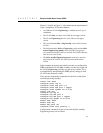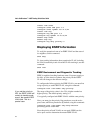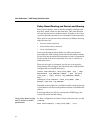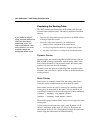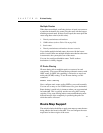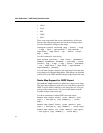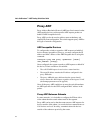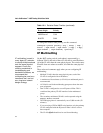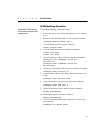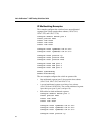
C H A P T E R 12 IP Unicast Routing
193
Multiple Routes
When there are multiple, conflicting choices of equal-cost routes to
a particular destination, the router picks the route with the longest
matching network mask. If these are still equal, the router picks the
route using these criteria (in this order):
1. Directly attached network interfaces
2. ICMP redirects (refer to Table 12.6 on page 216).
3. Static routes
4. Directly attached network interfaces that are not active
If you define multiple default routes, the route with the lowest
metric is used. If there are multiple default routes that have the same
lowest metric, the system picks one of the routes.
You can also configure blackhole routes. Traffic to these
destinations is silently dropped.
IP Route Sharing
IP route sharing allows multiple equal-cost routes to be used
concurrently. You can use IP route sharing with static routes or with
OSPF routes. In OSPF, this capability is referred to as equal cost
multi-path (ECMP) routing. To use IP route sharing, use this
command:
enable route sharing
Next, configure static routes and/or OSPF as you would normally.
You can use as many as five ECMP routes for a given destination.
Route sharing is useful only in instances where you are constrained
for bandwidth. This is typically not the case using 480T routing
switches. Using route sharing makes router troubleshooting more
difficult because of the complexity in predicting the path over
which the traffic will travel.
Route Map Support
The switch includes the ability to apply route maps to routes that are
being added to the kernel route table. You can configure the route
maps based on these origins of the route:



